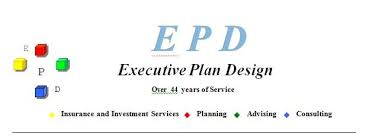Your Retirement … with Bob and Brian – Seven pros and seven cons of the president’s tax cuts and job act
Published in the May 2 – 15, 2018 Issue of Gilroy Life
 President Donald Trump has said, “We enacted the biggest tax cuts and reforms in American History. Our massive tax cuts provide tremendous relief for middle class and small business.” Many clients have inquired about the pros and cons of this bill and its effects on the middle class. Many speculate that in California and New York, this bill may not be providing the relief Trump touts. Here’s a list that summarizes seven pros and cons of what may be most pertinent to the people of south Santa Clara County.
President Donald Trump has said, “We enacted the biggest tax cuts and reforms in American History. Our massive tax cuts provide tremendous relief for middle class and small business.” Many clients have inquired about the pros and cons of this bill and its effects on the middle class. Many speculate that in California and New York, this bill may not be providing the relief Trump touts. Here’s a list that summarizes seven pros and cons of what may be most pertinent to the people of south Santa Clara County.
7 New Tax Breaks
- New Tax Brackets and Lower Rates: The highest individual tax rates dropped from 39.6 percent to 37 percent. The seven brackets broken down by income are as follows: 10, 12, 22, 24, 32, 35 and 37 percent.
- Standard Deduction is Doubled: The standard deduction for 2018 is $12,000 for single tax payers, $18,000 for head of household tax payers, and $24,000 for married couples filing jointly.
- Charitable Deduction Limits Increased: Deduction Limits for cash donations to qualifying charities has increased by 10 percent of a person’s adjusted gross income. The limit of 50 percent is now 60 percent meaning more tax savings for high income earners that feel charitably inclined.
- Annual Gifting Limit Increased: The IRS increased that annual gift exclusion which was previously $14,000 per year, per beneficiary to $15,000. This provides the opportunity for people to pass more wealth onto loved ones without using up any of their lifetime exemption amount.
- Estate Tax Exposure Reduced: From now until 2025, the lifetime exemption amount for estate and gift tax has been increased from $11.18 million per person. This means a married couple can pass $22.36 million. Anyone who has used up their lifetime exemption may now have a second chance to pass on more with this change.
- Child Tax Credit Increased: This change also expires in 2025 but the limit has doubled from $1,000 per child to $2,000 per child. These deductions are subject to maximum refundable amounts and phase outs with increased income.
- Individual Alternative Minimum Tax (AMT) is Modified: Until 2025, the exemption amounts and phase-out thresholds for individual’s AMT have increased.
7 Tax Breaks Eliminated
- State and Local Tax Deduction is Capped: Until 2025, deductions for state and local property taxes and sales taxes is capped at $10,000. This will have the greatest negative impact on high income earners.
- Mortgage Interest Deduction Modified- Until 2025, this deduction is available to fewer tax payers with debt less than $750,000. The previous limit was $1,000,000 but older debt maybe grandfathered under the act.
- Home Equity Line of Credit (HELOC’s) Interest Deductions Restricted: From now through 2025, tax payers may not deduct interest on their HELOC unless used for certain purposes that qualify as acquisition indebtedness.
- Certain Alimony Payments are No Longer Deductible: For divorce agreements enacted or modified after Dec. 31, 2017, tax payers are permanently not allowed to deduct alimony payments.
- Suspended Personal and Dependency Exemptions: While personal and dependency exemptions are suspended, the act enhanced the child care credit and increased the standard deduction. For many tax payers, the new breaks may help offset the impact of this change.
- Tax Preparation Fee Deductions No Longer Exist: Until 2025, the deduction of tax preparation fees has been suspended. In addition, several miscellaneous deductions are no longer available.
- Roth IRA/401k Conversions Can No Longer Be Undone: The previous law allowed tax payers to reverse a Roth IRA/401k within a defined period. Benefits could be seen if the market decline was dramatic like in 2000 and 2008. This change is permanent currently.
Brian Harrigan and Bob Price work at Executive Plan Design. For more information on tax reform changes, consult a financial professional or call (408) 767-2572.
- Your Retirement … with Brian & Bob: Adjust your retirement portfolio to account for threat of inflation - January 28, 2022
- Your Retirement . . . with Brian & Bob: ‘Build Back Better Act’ passes economic package with tax changes - December 2, 2021
- Your Retirement . . . with Brian & Bob: Learn to maximize your pension by understanding all the options available - July 29, 2021
